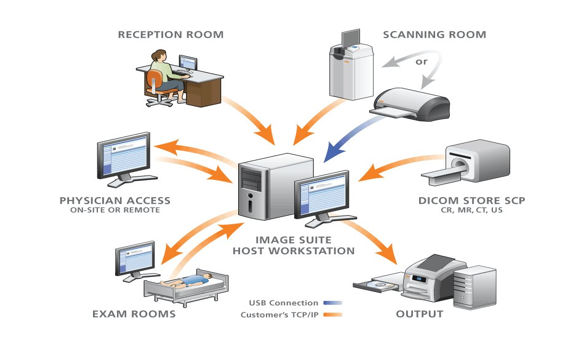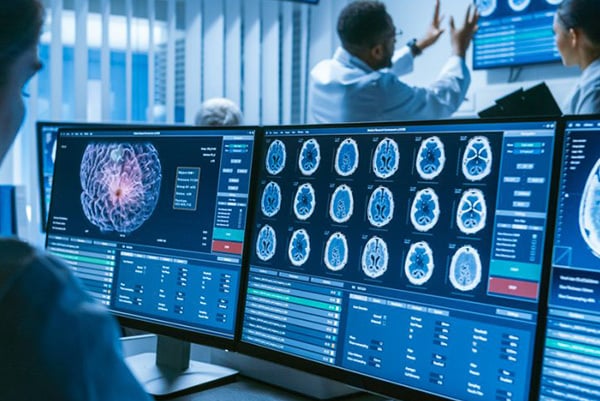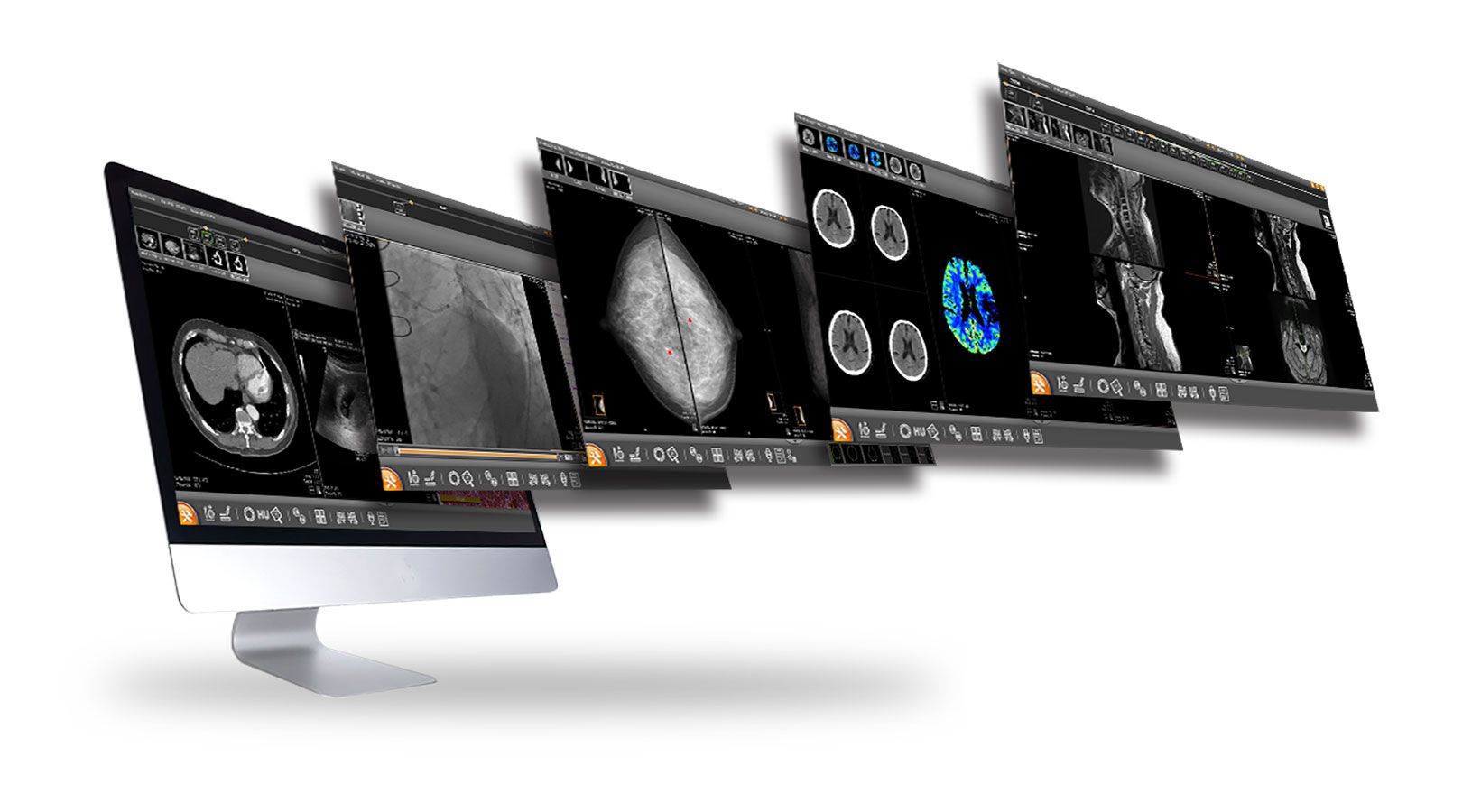Although the traditional x-ray has been around since 1895, digital x-rays weren’t introduced until the mid-1980s. Since then, the industry has become a multi-billion dollar market that is growing at exponential rates.
Digital x-ray equipment is only half of the equation, however. There also needs to be a way to manage the images once they are taken and uploaded into the system.
Digital X-rays are managed using a PACS system, which is a type of medical imaging technology that is designed to store, manage, and transmit digital medical images and related patient information.
What is a PACS?
PACS stands for Picture Archiving and Communication System. It is a medical imaging technology that is used to store, manage, and transmit digital medical images and related patient information. PACS technology allows healthcare providers to access patient images and data from any location, as long as they have access to the system.
PACS typically consists of four main components: image acquisition devices, such as X-ray, CT, MRI, and ultrasound machines; a secure network for transmitting images and data; a secure archive for storing images and patient data; and workstations for viewing and interpreting images.
How Does PACS Work?
When a digital X-ray is taken, the image data is transmitted to the PACS system, where it is stored in a secure archive. The PACS backs up your digital x-ray system. The image can then be accessed by authorized healthcare providers from any location, using a computer or other device with PACS software installed.
The PACS system also allows healthcare providers to view and interpret digital X-rays using specialized viewing software. This software allows the provider to manipulate and enhance the images, such as adjusting the brightness and contrast, zooming in on specific areas of the image, and measuring distances and angles.
This allows physicians and radiologists to review images and make diagnoses remotely, which can be particularly useful in situations where patients are located in remote or underserved areas.
Who Uses a PACS?
PACS is used primarily by healthcare professionals such as radiologists, radiologic technologists, and other medical imaging specialists. PACS is also used by veterinary clinics.
Other healthcare professionals such as physicians, surgeons, and oncologists may also use PACS to access and review medical images for the diagnosis, treatment planning, and monitoring of patients. PACS is also heavily used by Chiropractors.

PACS can be integrated with other medical record systems to provide a comprehensive view of a patient's medical history.
In addition to medical professionals, hospital IT staff and administrators may also use PACS to manage and maintain the system, including performing backups, system upgrades, and user management.
What are the Benefits of Digital X-Rays and PACS?
The use of digital X-rays and PACS technology offers several advantages over traditional film X-rays. Digital X-rays can be taken and transmitted much more quickly than film X-rays, and the images can be viewed and interpreted almost instantly.
Digital X-rays also use less radiation than film X-rays, which can be beneficial for patients who require frequent imaging exams. X-rays managed through a PACS system offer a faster, more efficient, and safer way to manage and interpret medical imaging exams, helping to improve patient care and outcomes.
PACS can also integrate with other electronic medical record systems, allowing healthcare providers to access patient images and data from within their existing workflow. This can help to improve efficiency, reduce errors, and enhance the quality of patient care.

The Future of Digital X-rays
The future of digital X-rays is promising, and there are several emerging technologies and trends that are likely to shape the field in the coming years. Here are a few potential areas of development:
- Artificial intelligence (AI) and machine learning
- Portable devices
- Integration with electronic health records (EHRs)
- Improved patient experience
Overall, the future of digital X-rays is likely to be characterized by continued technological innovation and integration with other healthcare technologies, leading to more efficient and effective patient care.
A PACS system provides the most efficient way to manage digital x-rays and ensure patients experience the highest level of care, at all times.

